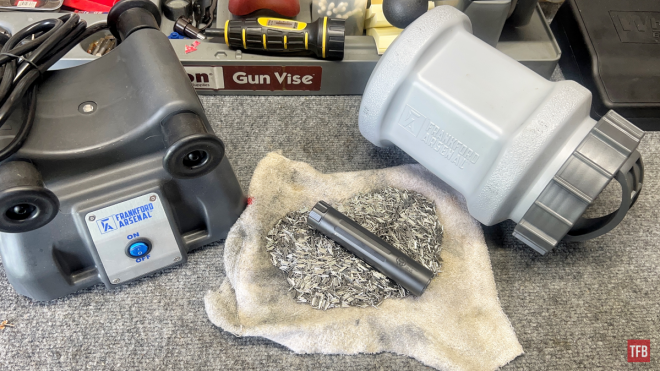Welcome everyone to the TFB Armorer’s Bench! As mentioned in the little blurb, this series will focus on a lot of home armorer and gunsmith activities. In this article I decided to touch further on a project I had referenced intending to do back when I worked with the Frankford Arsenal Rotary Tumbler Lite. As far as cleaning rimfire suppressors goes, there are a few different options. You can do it by hand (scrubbing and soaking in solvents), you could get an ultrasonic cleaner, perhaps attempt the infamous “Dip”, or I have heard about people using stainless steel pins and a wet tumbler which is normally used for reloading. I had some time to put this to the test while I worked on some other projects and my Dead Air Mask really needed a cleaning. Let’s dive in and see how cleaning a suppressor with a wet tumbler went!
TFB Armorer’s Bench: Cleaning a Suppressor with a Wet Tumbler
Here, we at TFB hope to inform, entertain, and even inspire any would-be gunsmith or armorer out there. Ideally, with the information I provide and with the help of our sponsors, you can have some useful knowledge pertaining to the conservation and improvement of firearms technology while at the same time sharing experiences and teaching each other new tips and tricks along the way in the comments. Digging deep into what it is to be an armorer or gunsmith has significance but what is important is what those people do to show they’ve earned that title. I am happy to share my experiences and knowledge and hope it is informative!
Make your personal safety a priority:
- Practice proper gun safety. Always make sure before the firearm hits your bench that it is unloaded and safe to be handled.
- Wear the proper safety equipment. The main one would be safety glasses (decent ones) since parts are often under spring tension and you may work with high RPM tools. Other honorable mentions would be latex gloves or a respirator when working with potentially harmful solvents and oils. Also hearing protection when working with loud machinery or test-firing firearms.
- Modifications, alterations, and customizations will void your firearm’s warranty 9.5 times out of 10. Please take that into consideration before attempting any at-home gunsmithing.
- If you are unsure about proper safety practices, disassembly procedures, or warranty standards, stop, put down the tools, and consult a competent gunsmith.
Brief Recap: Cleaning a Suppressor with a Wet Tumbler
The Frankford Arsenal Rotary Tumbler Lite is a wet tumbler made for cleaning brass before reloading. This works by literally rotating a barrel full of water, very small stainless steel pins, and some soap (more or less). The stainless steel pins do the scrubbing and polishing for you and after a couple hours, you dump it all out and let it dry off. This is one of many ways to polish your brass up before reloading. Other more common options would be using a dry media tumbler which vibrates corn cob or walnut particles to polish the brass. The downside with that is that your brass is not necessarily clean after the fact and the media eventually wears out after many uses.
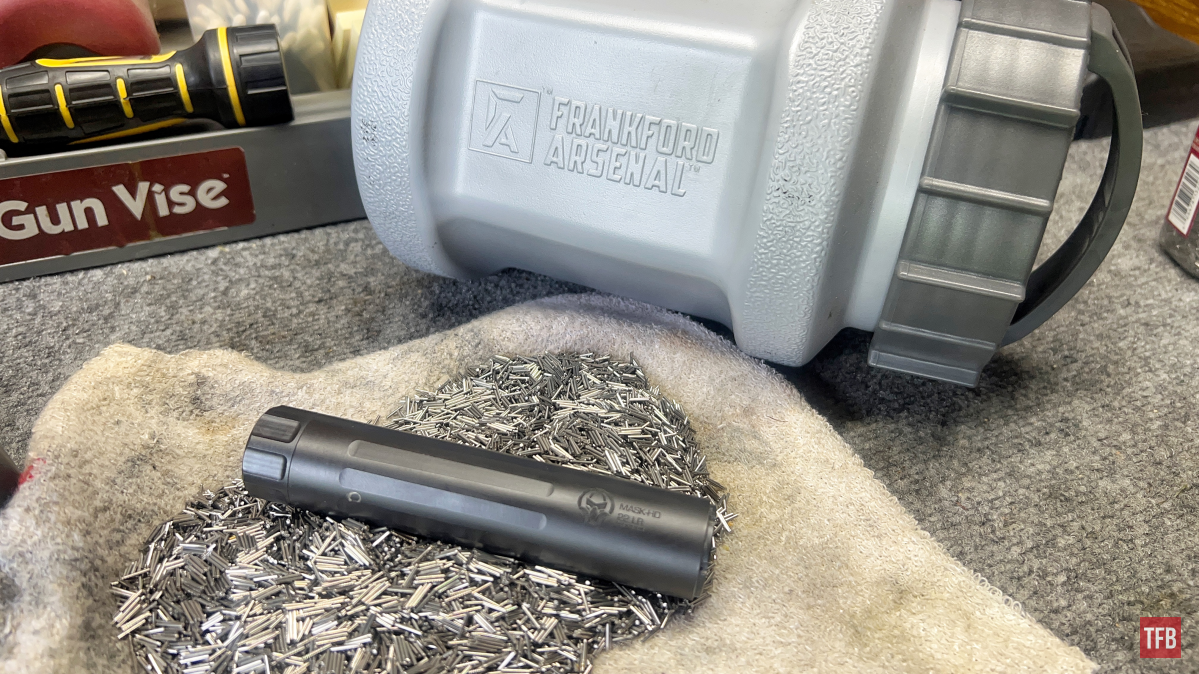
The Prep: Cleaning a Suppressor with a Wet Tumbler
I disassembled my Dead Air Mask which has a series of keyed baffles. Since the baffles are keyed rather than monolithic, they do not let much as far as carbon and lead out into the body of the suppressor. I did not plan on tumbling the body or the front and rear caps because I am pretty positive the finish would be polished off.
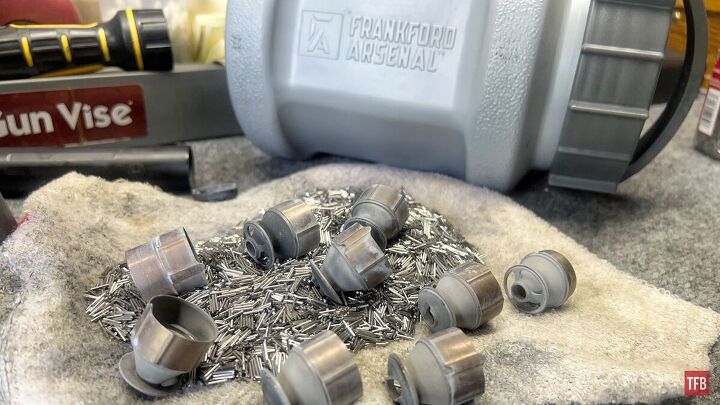
I started by doing exactly what I would with my brass for reloading. I placed it in my tumbler along with half a cup of some degreaser (probably unnecessary) and water. There are no stainless steel pins at this point so I only tumbled this for around 10-12 minutes.
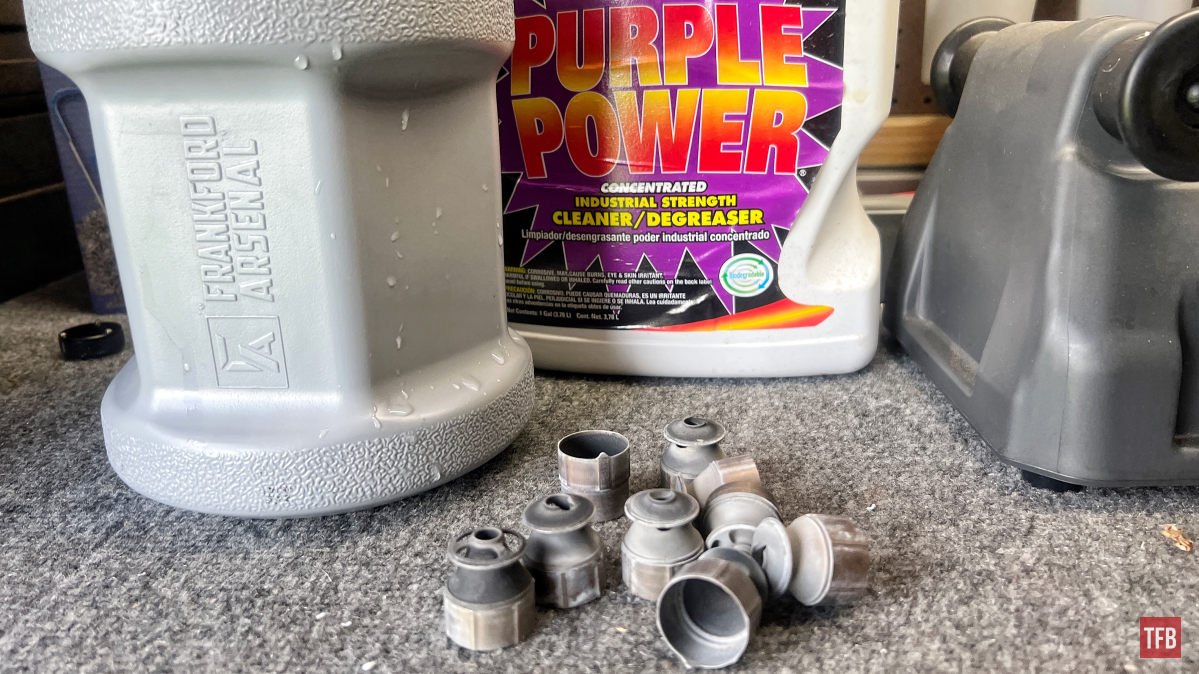
I did notice that this knocked most of the powdery carbon residue off but a majority of the caked-on lead and carbon were still present.
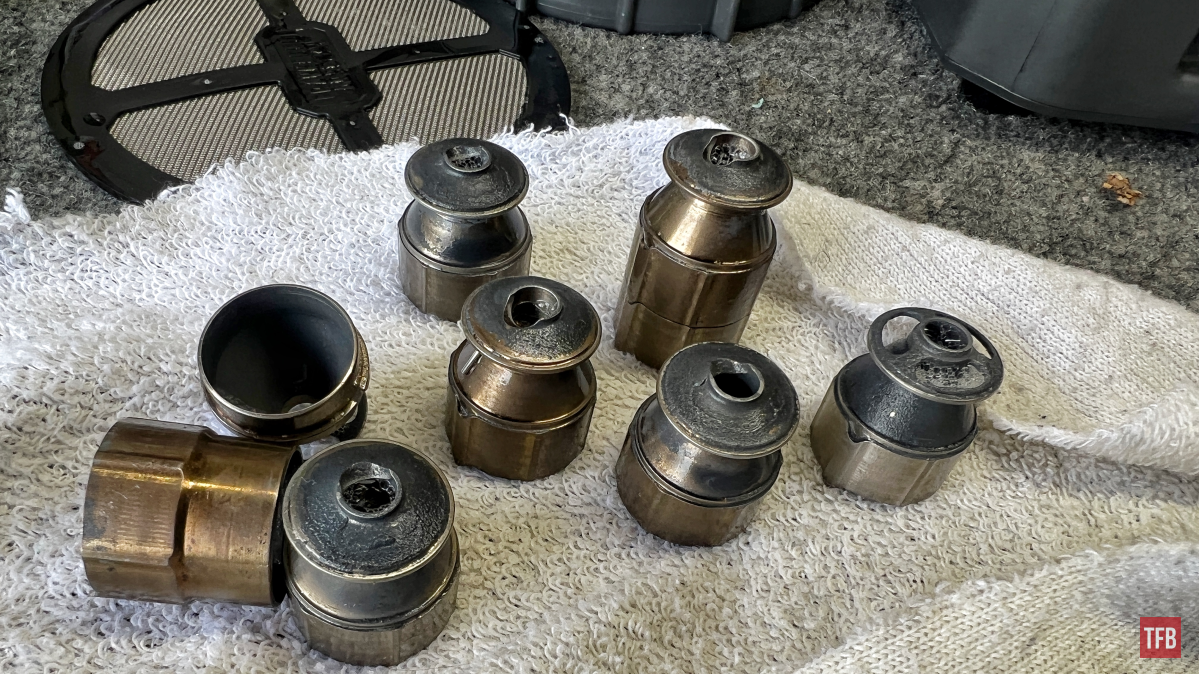
Two-Hour Tumble: Cleaning a Suppressor with a Wet Tumbler
As far as tumbling, I made sure to put my degreased baffles and stainless steel pins into the tumblers and make sure they got mixed well. Then I added water, 2.5 tsp of dish soap (some Dawn), and 1/4 tsp of Lemi Shine. This was probably unnecessary and the water and stainless steel pins are all I need but I was shooting from the hip here. I turned the tumbler on and let it cycle for just over two hours.
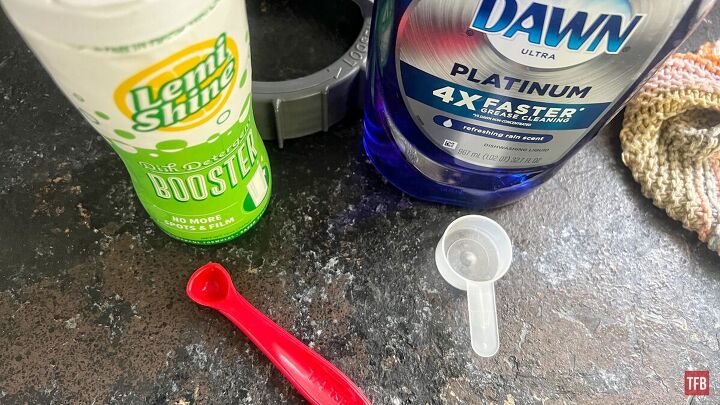
Results and Final Thoughts: Cleaning a Suppressor with a Wet Tumbler
After two hours of tumbling, I was surprised but more or less in a disappointed way. I had pretty high hopes for this being a more passive way of cleaning my baffles. In truth, after two hours, the stainless steel pins did a good and admirable job on the top faces of the baffles. There were a few spots of thick lead stuck on but I figured if I decided to tumble for another two hours (I ran out of time this day) it would probably be cleaner or all clean.
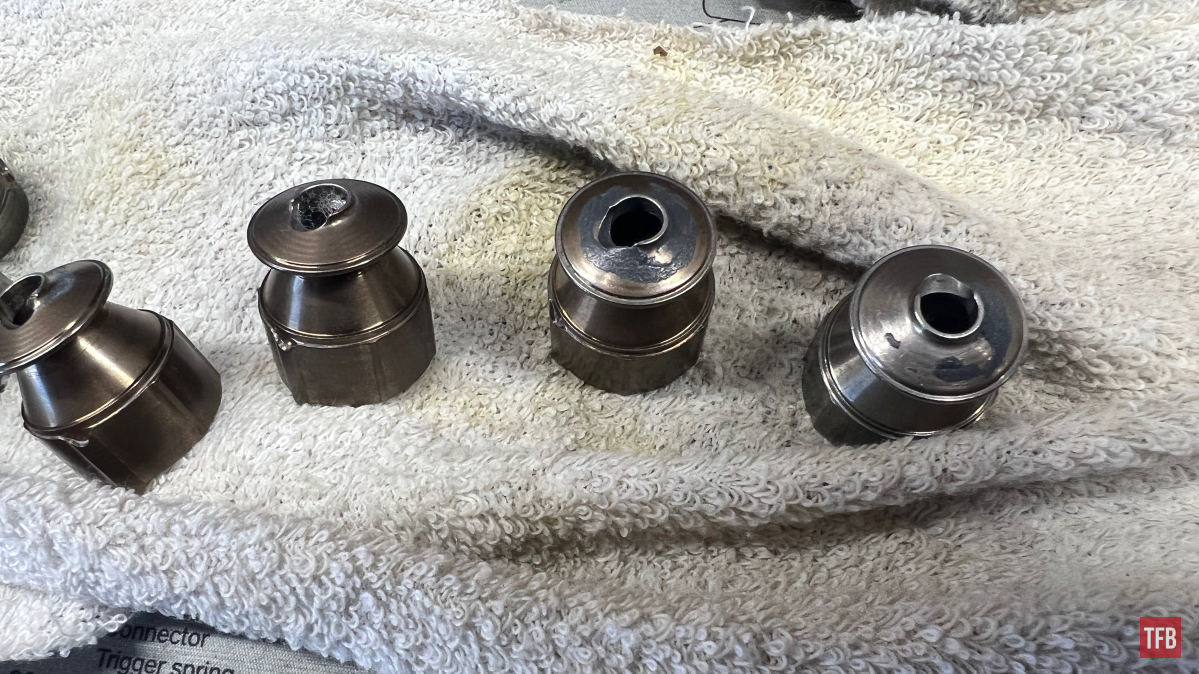
The part where the disappointment comes in is the inside of the baffles (always the hardest spot to clean) looked untouched for the most part. I am sure it did some damage to the buildup but not enough to notice. I do not think further tumbling would have helped the inside of the baffles.
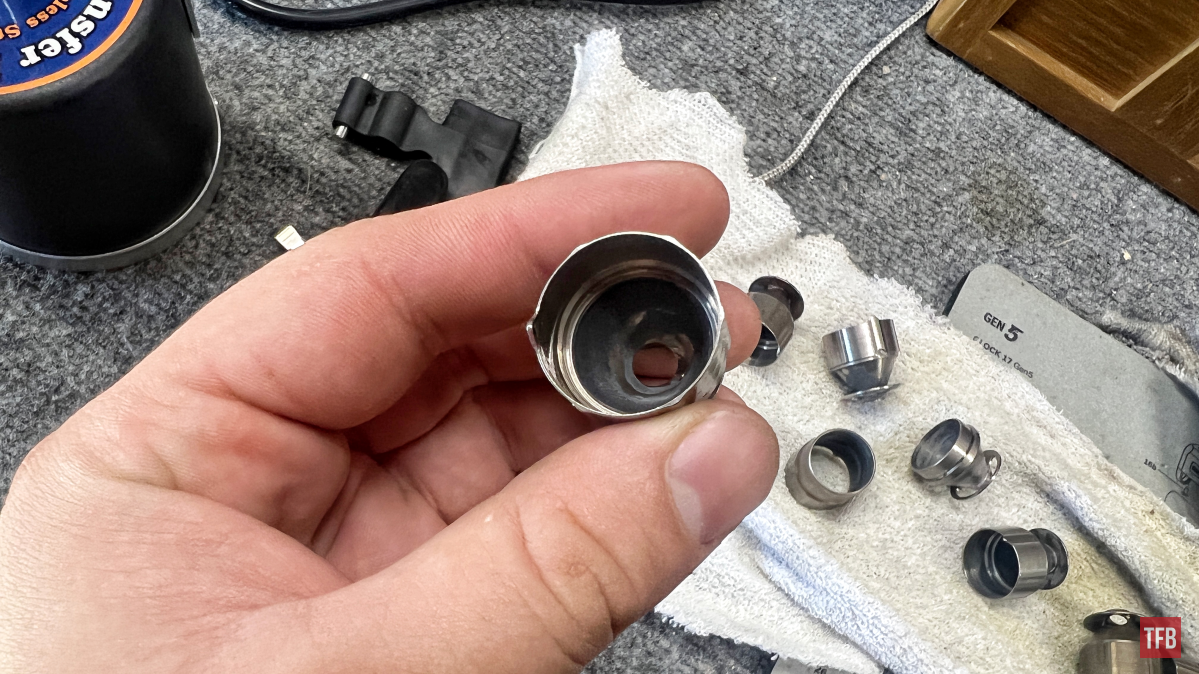
I am curious if any of you folks have tried this and had different techniques or better results. I am also curious if there are different methods in general you prefer. I myself typically use a sonic cleaner that doe wonders.
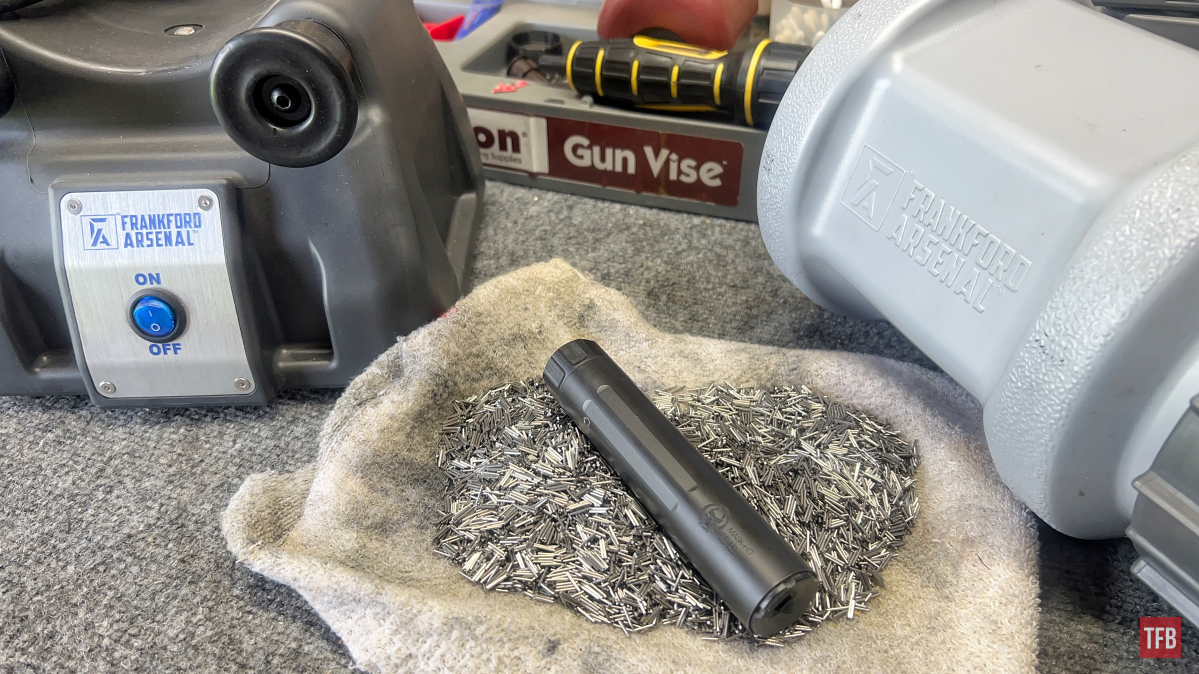
Quick closing tip! For the inside of baffles such as the ones found in a Dead Air Mask, I use a large 12 gauge or 10 gauge bronze brush chucked into a drill to chip away at the lead and carbon buildup. It works great. Just be very careful of yourself and your baffles.
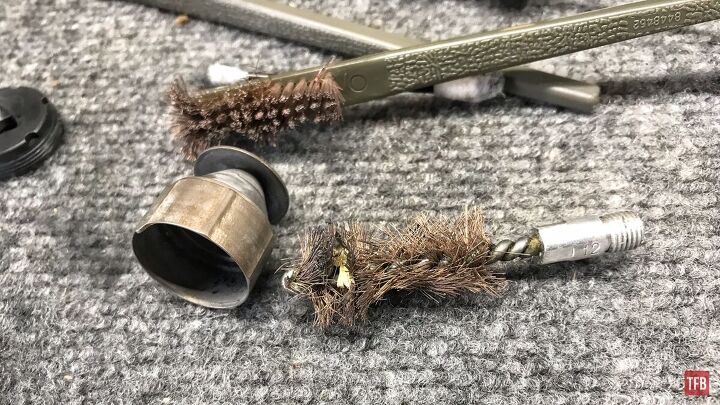
As always, thank you for reading TFB! Be safe out there, have fun while shooting, and we will see you next time for the TFB Armorer’s Bench brought to you by Wheeler, Tipton, Caldwell, and Frankford Arsenal! Also, let us know what you think in the comments below! We always appreciate your feedback.
Caldwell Pro Range Glasses, Clear

The Caldwell® Pro Range Glasses feature a stylish wrap-around design and are a great choice for all shooters. They feature an adjustable nose piece and temples for all day comfort. The scratch resistant lens meets ANSI Z87.1 standards and offers 99.9% UV protection.
Frankford Arsenal® Rotary Case Tumbler Lite
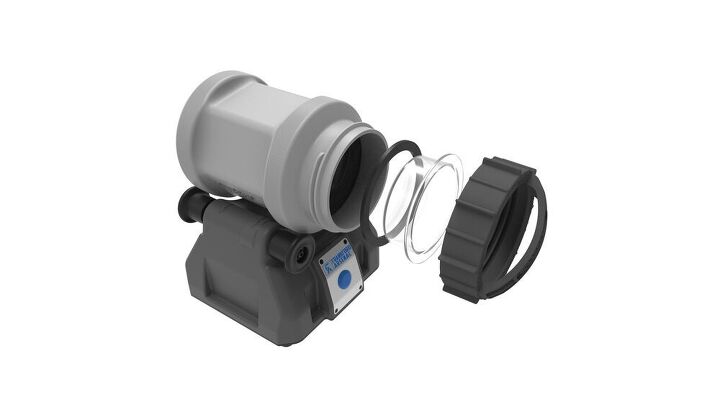
The Frankford Arsenal® Rotary Case Tumbler Lite is the compact version of the Platinum Series Rotary Tumbler. This tumbler can hold up to 300 pieces of .223 brass. The Rotary Tumbler Lite is especially great for reloading specialty cartridges and lower volume. One of the best features is its maintenance free, direct drive electric motor. The leak proof cap is clear to allow you to check up on the tumbling action while keeping your reloading area clean and dry. Frankford Arsenal®’s proprietary Rotary Tumbler Lite delivers unmatched accuracy at the bench and in the field.
Frankford Arsenal Platinum Series Wet/Dry Media Separator
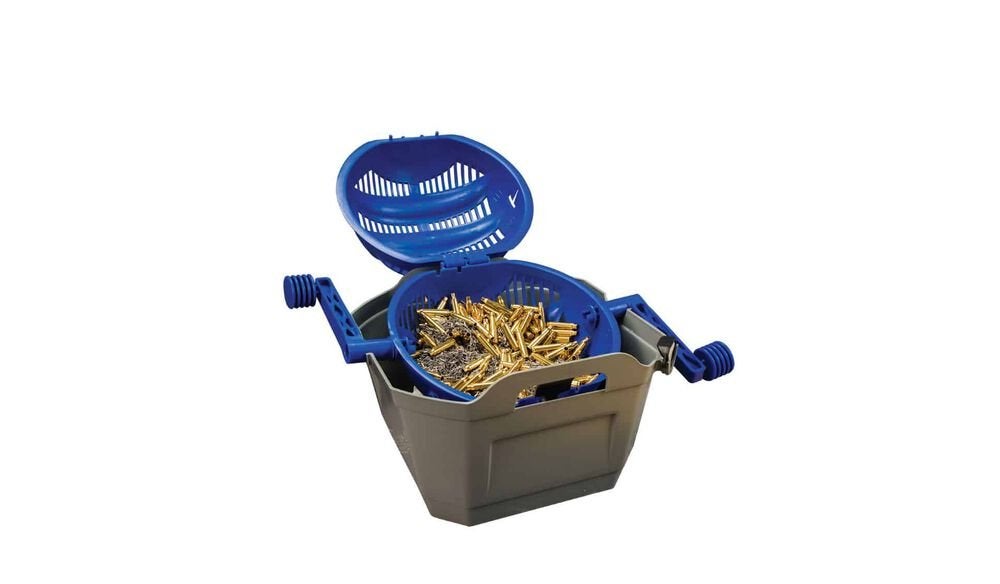
The Frankford Arsenal Platinum Series Wet/Dry Media Separator is perfect for separating the stainless steel pins from your brass after rotary tumbling.
Brass Cleaning Solution
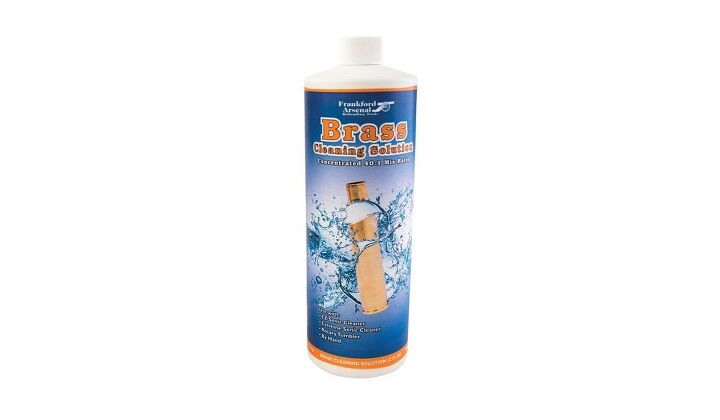
The Frankford Arsenal® Ultrasonic Brass Cleaning Solution was scientifically formulated to quickly remove carbon buildup, tarnish, and oxidation on brass. It was also specially designed to be used with the Frankford Arsenal line of ultrasonic cleaners. Frankford Arsenal cleaning solutions are so strong that they can be used for multiple cleaning cycles before having to mix new solutions up. Get the best cleaning results possible with the Ultrasonic Brass Cleaning Solution.
STAINLESS STEEL TUMBLING MEDIA
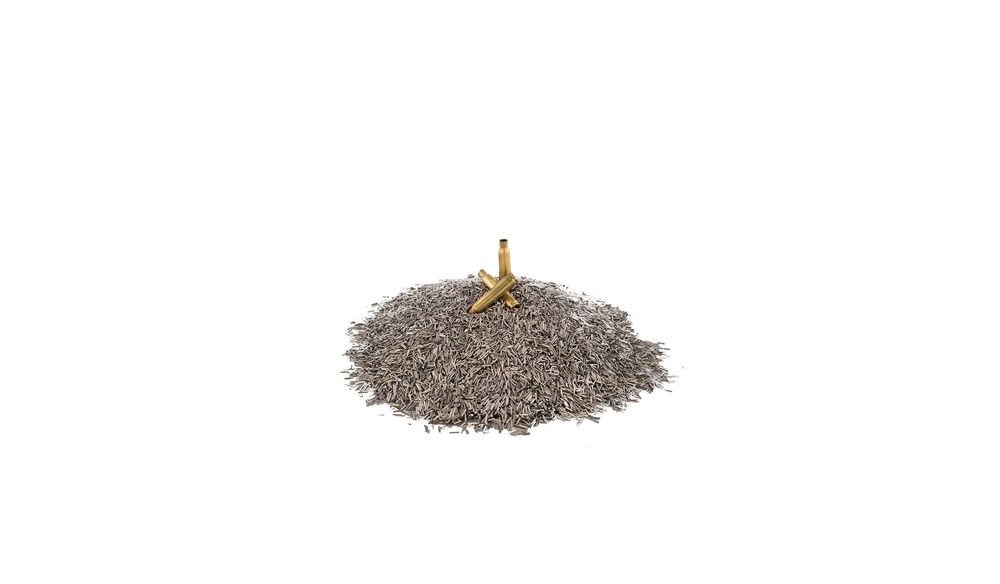
The Magnetic Stainless Steel Tumbling Pins are designed to clean brass cases giving a “like new” look. Unlike other media like corn cob or walnut, stainless steel doesn’t create dust and also cleans the inside of cases, primer pockets, and flash holes. Stainless steel also doesn’t damage brass and lasts for multiple uses.
Tipton POWER SWABS – PISTOL CLEANING KIT, 500 COUNT
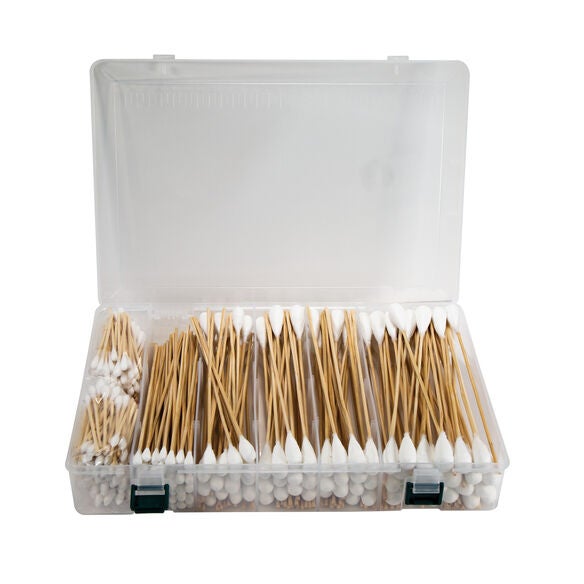
Tipton’s new Power Swabs are an essential part of your cleaning kit. They’re disposable, fast, and easy to use, plus they provide no-mess cleaning with all your favorite solvents and oils. They also fit lands and grooves better than a patch for maximum cleaning.
 Your Privacy Choices
Your Privacy Choices
